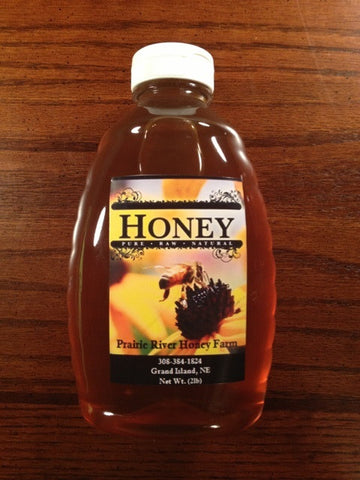HONEY CRYSTALLIZATION: WHY DOES IT HAPPEN AND HOW TO USE IT ANYWAY?
If you have raw honey, from this season (or from previous seasons), it is possible/likely that at this point in the year, it is starting to crystallize. While I know how to temporarily ‘fix’ the problem, I wanted to know more about WHY it happened (scientist in me). I am lucky to have a good source of information – the beekeepers in the area, so I spoke with people who know and also referenced Google. I found a great bunch of articles online; one in particular that I felt gave a concise summary of why and how crystallization happens. From that, I gleaned the most important points for people to understand; I thought this was good information to share.
The following information was abridged from the online newspaper Daily Excelsior’s article, “Facts About Honey Crystallization.”
The term “raw honey” means it came straight from the hive, gravity fed through a strainer to remove honeycomb, beeswax, and larger particles of natural debris. Raw honey can become cloudy … it is not going bad. It is crystallizing!
Raw honey is NOT FILTERED – filtered honey goes through a process where it is heated then rapidly cooled. This prevents it from crystallizing, but the heat also kills most of the enzymes, vitamins, minerals and amino acids and the filtering removes most of the pollen.
WHY DOES RAW HONEY CRYSTALLIZE?
- Honey is a super-saturated solution of primarily two sugars: glucose and fructose. Just like with your powdered lemonade, it is a natural process for some of the sugars in a super-saturated solution to eventually come out of solution. All raw honey will crystallize due to glucose.
- Bits of pollen in raw honey provide an excellent substrate to encourage crystallization.
- Low water content in honey helps to keep if from fermenting, but also allows easier crystallization.
- Nectar from different flowers varies in its ratio of glucose to fructose and can influence how fast crystallization happens.
When honey crystallizes, it becomes thicker (if tiny crystals are forming) and cloudy as more crystals form). Some crystallization results in a coarse sugary texture and some in a creamy texture. You can’t prevent it, but you can delay crystallization by keeping your honey in a warm location near the stove (not the cold cupboard against an outside wall).
OVERCOMING HONEY CRYSTALLIZATION
- Use it anyway… it will melt in hot drinks, can be measured with spooning into a measuring cup the same volume as before.
- If you need that flowing golden liquid, place crystallized honey in a warm water bath of about 40°C (100°F) for 15 minutes or more until the crystals dissolve and the honey liquefies.





Share this item: